
A Survey of Writers on Contemporary Writers
Listening to writers read and discuss their work at Newtonville Books, the bookstore my wife and I own outside Boston, I began to wonder which living, contemporary writers held the most influence over their work. This survey is not meant to be comprehensive, but is the result of my posing the question to as many writers as I could ask.
JENNIFER EGAN
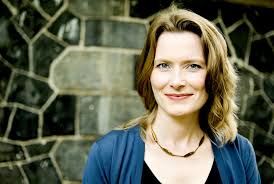
© Colin Marshall
ALLISON AMEND: Just for the record, I discovered Jennifer Egan before the Pulitzer Committee did. But they must recognize what I do when I read Jennifer’s fiction: An uncanny ability to predict the future of American society. In Look at Me (2001), she accurately predicted our obsession with reality television, and that the greatest terrorist threats would come from those living among us. Then A Visit From the Goon Squad (2011) did what I never thought was possible: included a speculative story using Powerpoint that felt not like a gimmick but rather so natural and enthralling that it completely transcended its medium. Goon Squad was so far reaching, so visionary, so completely unexpected, that I began to understand what engrossing experimental fiction might look like. Not the cerebral formalist playing of avant-garde writers, but stories that use the building blocks of emotion—character—to affect a reader. The form them seems like a literary lagniappe, enhancing the story and throwing the characters and their dilemmas into relief. What emerges from this short story collection (Story cycle? Novel? Novel in stories?) is a portrait of a generation, where we came from and where we’re going, a history of our time.
JOANNA HERSHON: In her masterful and oddly prescient novel, Look at Me, Jennifer Egan’s protagonist Charlotte—a midwestern model—has been through a jarring transformation. After a car accident leaves her face disfigured, she has reconstructive surgery, only to become beautiful again, though unrecognizable to anyone who previously knew her. This set-up alone seems Lynchian enough with its preoccupation with surface, but Egan’s magic lies in how, even when expressly writing about surface, she repeatedly transcends it. Charlotte identifies people’s “shadow selves…that caricature that clings to each of us, revealing itself in odd moments…” while becoming increasingly fixated with faded painted signs on the sides of buildings in New York City. Out of the many leitmotifs I’ve stumbled across in my life as a reader, and out of the many contained in that one brain-blasting novel, this is one that has permanently wormed its way into my consciousness. I never pass an eroded painted sign without thinking of Jennifer Egan, and how those painted signs inevitably lead one’s gaze to the blank slate of the sky. But no matter how conceptual her later books may be (and conceptual they most certainly are: witness the completely successful chapter-as-PowerPoint-presentation in A Visit From the Goon Squad, or the metaphysical gothic hybrid of The Keep), there’s a bright physical sensation that lingers after reading her work. At the risk of sounding like one of the hippie sisters in her first novel (the magnificently sensual The Invisible Circus), each of Jennifer Egan’s books produces glittering trails of perception, a space that exists between dark and light, between truth and lies. Hers is the voice that I hear in my best moments of silence, when time feels extravagant, even irrelevant, and anything is possible.
KATHERINE HILL: We worship some writers for their sentences, others for their vision. Jennifer Egan is totally unfair because she’s an absolute master of both. She gets the little things right on the level of the line and she has the command of character and culture to sustain a powerful novel of ideas. In a single paragraph she can move from an earthy, sensory perception—say, of a “patient cow” getting milked by a machine in Look at Me—to a model’s heady conceptual paradox—“Being discovered felt like a discovery.” Her writing is packed with revelations that are never just revelations, bombs that explode in the moment and then reverberate pages later. At all times she has her larger arc in mind, her themes to which she constantly returns. Who else could write an intellectual spy thriller that works on Twitter, as penetrating in each epigrammatic paragraph as it is as a full-length feed? Who else could write a chapter in PowerPoint capable of moving a reader to tears? I usually take only occasional notes when I read, but I feverishly outlined A Visit From the Goon Squad, as if hoping to rewrite it myself. I needed to know the secrets of its composition, the clever ways in which those thirteen narratives hooked together, rubbed shoulders, battled time. The ways they answered, refuted, and evaded each other. “The sunsets!” I’ve been known to scream at a skeptic. “Look at what she does with the sunsets!” It’s hardly an exaggeration to say that Goon Squad was the best novel-writing workshop I ever took.
DAVE EGGERS

© Robert Gumpert
ARTHUR BRADFORD: Dave is an inspiring writer on several levels. First, he knows the craft. His sentences are well constructed and clever and he has read widely and therefore has a solid base of influences. But one would expect that from an established writer. What sets Dave apart for me is his sense of playfulness and desire to rethink the rules. Dave questioned the conventional wisdom which held sway in the literary and publishing world in the 1990s and ushered in a new sense of excitement about the written word. When he was first starting up McSweeney’s, he sent out these long rambling letters to his writer friends that were like a call to arms. His excitement was contagious. Before Dave came along I felt like the publishing world was a place run by far off academic types who operated by some sort of secret rule book and there was no way to change that. The first issue of McSweeney’s was populated mainly by stories which had been killed or rejected from mainstream publications—they were weird, and funny, and wild—so different from the fare of most of the literary quarterlies back then. When Dave’s first book came out, A Heartbreaking Work of Staggering Genius, one needed look no farther than the title page, with its odd send-up of the Library of Congress’ classification system, to see that this was a writer who approached things with a fresh and irreverent perspective. This attitude made us all want to try harder, aim higher, and break ground into a new frontier. And I suppose Dave’s career would be less impressive if he had merely rattled a few cages and then settled into the same old groove. But he continues to offer new insights with each new work, fiction, non-fiction, or screenplay. And his work with 826 Valencia is a shining example of how writers can give back and support the world of literature. All those young writers nurtured in the halls of the 826 centers will be the ones questioning our stale ways in the years to come, and it’s how good writing will survive.
DAVID JAMES POISSANT: You never forget your first love. After I became a reader but before I was a writer, I was an unhappy high school English teacher who dreamed of what it would be like to be a writer. I’d read a lot as an undergrad and written a few short stories, but, a year out of college, I was still trying to figure out who to read and what to write about. I’d even sent an impassioned email to the lead singer of one of my favorite bands asking what I should be reading. I can’t imagine why I thought this was a good idea, but it turned out to be a good idea, as, startlingly, the singer wrote back that I should read A Heartbreaking Work of Staggering Genius, a memoir written by a guy named Dave Eggers. I did. And nothing’s been the same for me since.
A Heartbreaking Work of Staggering Genius is an account of the death of Dave Eggers’ parents and Eggers’ subsequent quest to raise his younger brother, Toph, with help from their siblings. The memoir is a sad, funny, occasionally hyper, incantatory piece of writing. It employs all sorts of self-aware, metafictional and intertextual tricks so that, in the wrong mood, you can easily get bogged down in the excess. But, to let the book be what it wants to be, to give it the benefit of the doubt, is to surrender to a haunting story of loss and redemption. It’s also the publishing equivalent of Tim O’Brien’s The Things They Carried, which is to say that no matter what Eggers goes on to write, his memoir will likely overshadow and outsell what he writes. This isn’t necessarily a bad thing. It is what it is.
I was right in the middle of Heartbreaking Work when, in the fall of 2002, I opened a copy of The New Yorker to “Where Were We.” The story turned out to be an excerpt from You Shall Know Our Velocity, Eggers’ first novel and second book. I was hooked and bought the novel immediately.
You Shall Know Our Velocity, probably my favorite of Eggers’ novels, is the story of Will and Hand, two Americans who travel the world in an effort to get rid of some money that Will has come into and doesn’t want. The pyrotechnics here are less flashy than in Heartbreaking Work, though there are more than a few, including the clever insertion of several blank pages meant to represent how it feels to be airborne in a boat that’s just hit a wave, along with the deployment of Sebald-esque photographs that call into question the fictiveness of the fiction. Velocity is a kind of spiritual sequel to Heartbreaking Work, and if Eggers’ memoir feels a little farfetched, at times, for nonfiction, his novel feels very close to some secret truth, so that one can’t help wanting to read it autobiographically. I’m not the first reader to notice, for example, that the amount of money that Will wants to be rid of—$38,000—is awfully close to the sum Eggers claims to have netted from the memoir’s advance: $39,567.68.
I had put down the memoir to read the novel. I finished the novel, amazed, then picked up the memoir and was amazed anew. When I think about those books, it’s as if they share a spine. They run together for me, the stories and the narrative voices. But that’s okay. I think Eggers would have liked it that way. Here’s why:
Not long after the release of Velocity, Eggers announced that there was more to the novel, an additional 48-page “interruption” narrated by Hand and newly sandwiched between pages 250 and 300 of the 400-page book now retitled Sacrament. By the summer of 2003, Eggers would go on to publish “The Only Meaning of the Oil-Wet Water” in the magazine Zoetrope, a later story of Hand with nuances reminiscent of the Velocity insert. Then, Vintage would go on to reissue Sacrament in paperback, only with the original title You Shall Know Our Velocity. If you find all of this a little baffling, well, so did I at the time, and still do. But it didn’t turn me off from Eggers, just as I wasn’t turned off by Heartbreaking Work’s 48-page preamble or the 48-page supplement, “Mistakes We Knew We Were Making,” appended to the memoir’s later editions. You could call all of this excess, but the demand was there, the curiosity, the readers, so, if you’re Eggers, why not riff on your new hit single? Why not weave a ten-minute guitar solo into your set? Especially when, for my money, those added bonuses are some of the best writing he’s ever done.
But to overthink all of this may be to miss the point, which is that his body of work is fun. I don’t know whether Eggers is having fun, but his books give readers permission to have fun with them, even as those books broach subjects dire as cancer, genocide, and Hurricane Katrina.
The distinctive Eggers voice (it’s hard to pin this down except to say that you know it when you see it, or would have known it when you saw it before its imitators became legion) is evident in Heartbreaking Work and Velocity, as well as in the stories of How We Are Hungry and How the Water Feels to the Fishes, and in the forewords to The Best American Nonrequired Reading, Eggers’ annual edited series. This voice has yielded, in recent years, to voices more appropriate for their speakers and subjects: a Sudanese Lost Boy in What is the What, a Syrian-American immigrant in Zeitoun, and an American businessman in A Hologram for the King.
What hasn’t changed—and the lesson I take from Eggers—is how the author continues to allow himself leeway to go anywhere and to do anything in terms of genre and form, short works and long, fiction and nonfiction and that which writhes between. As Eggers writes in Heartbreaking Work: “All events described herein actually happened, though on occasion the author has taken certain, very small, liberties with chronology, because that is his right as an American.”
It’s also, of course, his right as a writer. And what a writer he’s turned out to be. And made me want to be. That permission he gives himself—to be free wielding and wide-ranging, at times inventive and at times restrained, at times realist and at times absurd, here furious and there laughing himself into tears, here satirical and there sincerity itself, a writer whose work touches the twin hems of humor and despair, perhaps the best at this since Donald Barthelme—to be such a writer, a writer who stands at the edge of the stage and cries out: “Are we having fun yet?” Is there room enough in any given generation for more than one of these writers?
God, I hope so.
KEVIN SAMPSELL: Dave Eggers initially influenced me because of the sheer strangeness and otherness of McSweeney’s magazine when I first discovered it, probably around the year 1999, when issue #3 came out. I was at work at Powell’s Bookstore and we had just started carrying it. I picked it up not really knowing what it was at first. I was transfixed by all the text on the cover and that alone seemed to be an endless amusement. I thumbed through the pages and laughed out loud at so many things. It was as if the literary journal had been re-imagined by comedic geniuses and postmodern experimentalists in equal measures. It felt, at the time, as if it were made for me. It was weird and funny and yet accessible and smart.
After that, I began sending stuff to Dave Eggers via email, and sometimes in the mail—strange Americana pamphlets I had found. He was encouraging and I had a few things published on their website. When he published his first book, A Heartbreaking Work of Staggering Genius, he (and therefore McSweeney’s) became quite popular quite quickly. I was inspired by how he balanced humor and melancholy in his memoir and then later in his other books, as well as the books that McSweeney’s published in their first years. I run a small press too (Future Tense Books in Portland, OR) and I was originally inspired by independent record labels like K and Sub Pop. McSweeney’s was the first press I felt a kinship with.
I continue to be impressed by and happy with the changing directions and tones that Eggers displays in his work. Not to mention his contributions to the literary culture and his community as a whole.
DEBORAH EISENBERG

© John D. & Catherine T. MacArthur Foundation
ZACHARY LAZAR: I first met Deborah Eisenberg at the Iowa Writer’s Workshop when I was 23, and not a particularly precocious or mature 23. To give an example: I don’t think I’d even read any of her work, which is painful to admit now. Deborah explained that the way she wrote her short stories was to start by completing a first draft, which she then revised many times until it was as good as she could make it, then she tore up that perfected draft and started the whole thing over from scratch. It seemed (and still seems) a daunting if not an impossible way to write. But it gave me one of my first clues about the kind of commitment that was involved in this life—the life of trying to write good fiction—that I was so dreamily attracted to. It also gave me an early lesson in contradiction, the possibility of being one way at the desk (deadly serious) and another way in life, for Deborah at this time used to wear several differently colored Swatch wristwatches on the same wrist and had a kind of idiosyncratic star-power that galvanized almost everyone.
To say that I have now read her work is of course an understatement. I have read it over and over again. She is a writer who absolutely refuses to settle for a mediocre sentence or even phrase. More importantly, although her work is funny, it is deep—an overused word, I know, but in this case apt. By deep, I mean that every one of Deborah’s stories contains a world (sometimes worlds). When a writer doesn’t settle, when a writer is attentive enough to find surprise meanings and connections within her own work, then that work develops permanence. I’m talking about the green light at the end of Daisy’s dock, or the eyes of T.J. Eckleburg. In the same way, Deborah’s work often takes the mundane and magnifies it into the emblematic or even the cosmic. I don’t try to imitate what she does, I just try to remember the high standards. When I was 23, she once told me of a short story I later published that it was promising, but “young.” I had a ways to go, in other words. What I know now is that you always have a ways to go. I know it in part because of Deborah’s example.
MICHAEL LOWENTHAL: When I evangelize, as I often do, for the Church of Deborah Eisenberg, one of the verses I recite is the titular character’s outburst near the end of Eisenberg’s story “Some Other, Better Otto.” The fussily intelligent Otto is hypercritical of those around him, including his complaisant lover, William, whose placidity only perturbs Otto all the more. After a tense evening, William suggests that Otto “Try and get some sleep,” and Otto responds with the following tirade:
“Try and get some sleep?” “Try and get some sleep?” This is unbearable! I’ve spent the best years of my life with a man who doesn’t know how to use the word “and!“ “And” is not part of the infinitive! “And” means “in addition to.” It’s not “Try and get some sleep,” it’s “Try to get some sleep.” To! To! To! To! To! To! To! Please try to get some sleep!”
I love this rant not only because it is hysterical (in both senses of the word) and because it so deftly reveals Otto’s stickler-for-precision nature, but also because it highlights the precision with which Eisenberg herself constructs dialogue, down to the smallest parts of speech and punctuation.
For my money, no contemporary American writer writes better—or better-punctuated—dialogue than Eisenberg. Like most masters, she flagrantly flouts the rules that the rest of us coweringly abide by. She’s a profligate italicizer, sometimes even italicizing one lone syllable within a longer word of dialogue; she scatters exclamation points like grass seed; and she relies on so many em dashes that I’ve sometimes suspected she gets paid not by the word but by the omitted word.
Fiction writers are usually warned against using such stylized techniques, for fear of calling attention to form at the expense of content. But Eisenberg manages to have her cake and eat it, too. Her pyrotechnic punctuation is both highly visible and entirely transparent, an artifice whose effect is the opposite of artificial. Her characters’ heightened, hyperreal dialogue allows us to hear what they say (and don’t say) more clearly than any transcript of human conversation could.
Another tour de force of dialogue appears in Eisenberg’s story “Mermaids.” Kyla, an adolescent girl, has been pawned off on the Laskeys, the family of one of her schoolmates, so that Kyla’s single mother can go out on a date. Over dinner, the Laskeys constantly snipe and interrupt one another, their conversation gaining a terrible sort of momentum from its very choppiness. The family’s lines of fracture are all too visible in the repeatedly fractured lines of dialogue.
Eventually Mr. Laskey proposes to take Kyla and his daughter Janey on a trip to New York, even though he recently returned from “business” there, so that Mrs. Laskey “will have one entire week of peace, all to herself.” As we will learn, however, Mr. Laskey’s more urgent motivation is the extramarital affair he’s conducting in the city. Our first hint of this comes from Mrs. Laskey’s brutally direct and yet exquisitely elliptical response to her husband’s proposal. “And when did you become so enamored of New York?” she asks him. “The last time you and I were there together, hellish sewer, I believe, was what you … It’s a filthy place, and you loathe it, and you are now proposing to go right back and expose the girls to it, and for what reason I cannot—”
Here Mr. Laskey interrupts her, and so her highly charged sentence never gets completed. Her husband’s reason for returning to New York so soon is one Mrs. Laskey cannot … fathom? Cannot believe? Cannot condone? Cannot bear to admit to herself?
It’s what Mrs. Laskey doesn’t say—to which Eisenberg calls attention with her characteristically noticeable punctuation—that gives the scene, like all of Eisenberg’s fiction, so much resonance.
MANUEL GONZALES: Deborah Eisenberg traffics in reality in a way that seems at once foreign and out of reach to me. Her characters, her situations, the emotions that bleed through the page—they are quiet and small and focused and deal with nuanced explorations of conversations and the strange, awkward way people react and interact, their subtle navigations of the world that surrounds them, which is, for all intents and purposes, a real and realistic world.
In other words, she is almost exactly opposite of the kind of writer I am, which is why I find her so influential.
Whenever I am working through a story or a piece of fiction and want to make things louder, want to make them brasher or more extreme, and I begin to feel the fabric of the world I’m trying to create stretch and strain against the seams, near to bursting, I return to Eisenberg. Or whenever I feel that a story has left the earth, has become little more than some nightmarish piece of fancy, ungrounded and full of games but little emotion—I return to her work, then, too. Her story, "Mermaids,” or her story, “Custodian.” It’s not that there isn’t something loud and extreme and ambitious about her work, the language of her stories, but that she manages all of it—paragraph-long sentences, beautiful and horrifying descriptions, awkward interactions coupled the failings of human decency—she manages to fit all of this into the worlds of her stories, yet the seams never break.
What’s more, she fashions out of these stories moments of high-drama, of frightening tension and the uncanny sense that we have been transported to an otherworld, but does so without leaving this world or the rigorous and uncompromising constraints of reality. But more than for any other reason, I return time and again to the stories of Deborah Eisenberg because in them she ably achieves in a few words an emotional effect that I might achieve—with hesitation—over the length of an entire story, and one that I’ve filled with magic and monsters and robots and unicorns.
BRET EASTON ELLIS
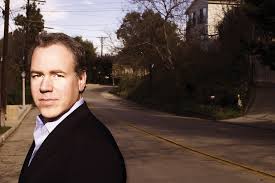
© TheFilmStage.com
CHRISTIAN TEBORDO: It seems to me that the first sentence of Bret Easton Ellis’s first novel anticipates his entire project as an artist. “People are afraid to merge on freeways in Los Angeles,” Clay, the narrator of Less Than Zero, tells us. Then he explains that this is something his sometime-girlfriend Blair has said as they prepare to merge on the freeway. Then he repeats the line, concluding that, “[t]hough that sentence shouldn’t bother me, it stays in my mind for an uncomfortably long time.”
It’s an unusually clunky sentence for a writer admired, or at least acknowledged, even among his many detractors, for his precision at the sentence level. When a precise writer writes a clunky sentence (especially when it opens a novel), I tend to give that writer the benefit of the doubt. In this case, I think Ellis tacked on everything after “merge” for fear of seeming heavy-handed.
People are afraid to merge.
True enough, though not particularly groundbreaking when given its traditional interpretation: that people have trouble connecting with each other. But while Ellis’s novels confirm this, they’re more concerned with the less conventional interpretation of that sentence: that people are afraid to merge their many selves.
In a world where the eyes of T. J. Eckleburg are not watching, a world where you can “disappear here,” as the billboard (just one of many Gatsby references in the book) of Less Than Zero informs Clay, humanism has no solid foundation, and there is no good reason for a person to believe in a “true self,” a fixed identity. Because of this, where a more conventional version of the novel (or maybe a film adaptation) would have ended with some epiphany about how Clay and his friends are essentially good and well-intentioned and have only been going about things the wrong way, the emotional peak of Less Than Zero revolves around the rape of an underage girl. The moral quibble that Clay feels, as a witness, is provisionally resolved when he learns that the girl is not eleven, as he’d thought, but twelve.
This, of course, leaves Ellis open to accusations of nihilism, and that may be fair for all I know. But I’ve always read him as a profoundly moral, even moralistic, writer. In his first couple of novels, he mostly diagnoses and dramatizes the problem of identity, complicating this with the strange brand of deadpan satire (which may make it too easy to reject his work as shallow or gimmicky) that he uses to bring the problem to a crisis in American Psycho. It strikes me as strange that, more than twenty years after its publication, that book is still better known for its period signifiers than the howl of despair that the opening sentence (another deliberately clunky one) declares it to be. Ellis’s follow-up, Glamorama, explores the same issues of identity but on a broader socio-political scale and makes a good case that he may be a dark-horse candidate to succeed Delillo.
But it was with Lunar Park that Ellis really tried to solve the problem. He did this by publicly attempting to merge his many selves—the serious writer, the literary playboy, the pop culture aficionado, the vicious satirist, the sad human being who never got along with his father and couldn’t figure out why. It’s uneven, imperfect. Maybe necessarily so. But in its vulnerability, it’s one of the most daring and honest performances I’ve read by a living fiction writer.
Since then, he’s taken his act beyond the book, through film, a series of strange interviews, and, of course, his notorious Twitter account. It’s a spectacle worthy of Kierkegaard or Artaud, and I only hope it doesn’t keep him from writing more novels.
Because of all of this, the question of influence is a tricky one with Ellis. His approach seems easy to impersonate—take some Didion, a couple of mistaken identities, throw in some back issues of GQ, veer suddenly into ultraviolence, occasionally say something outrageous to make sure your microphone’s still on. But that’s not influence; it’s impersonation.
Ellis’s chief rival once said: “Fiction’s about what it means to be a fucking human being,” and that perfectly acceptable aesthetic or ethic has somehow become dogma. But in order to talk about what it means to be human, we need to start from a notion of what it’s like to be human, and Ellis has done that consistently and fearlessly. In doing so, he’s rejected the notion of literature as a genre, instead using the novel as a fluid medium for exploring the actual and the possible. That’s what I’ve tried to take from him as a writer.
What I’m getting at is, by denying us a glimpse into his characters’ depths (which may or may not exist), by focusing on the ways they relate to each other (mostly terribly), by showing them attempting (rather than realizing), Ellis seems to me to be demonstrating and confirming the complexity of the experience of life. Call me sick, but it’s oddly beautiful and it makes me optimistic.
NATHAN ENGLANDER
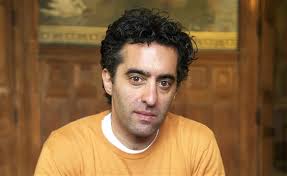
© Telegraph
SCOTT CHESHIRE: Nathan Englander is mostly known for his short stories, internationally so, and he has at least one international short story award to prove it. Like most of his readers, I discovered him with his first collection, For the Relief of Unbearable Urges, and felt I had fallen into a world both alien and totally familiar, and so I became forever hooked. For his humor, yes, and for the beautiful writing, yes, but I must admit, at first, it was largely because he wrote about religion. Englander’s work specifically explores the world of Orthodox Judaism, often its legacy and precarious existence in the modern world. What I find endlessly fascinating is his commitment to an unabashed interrogation of that orthodoxy from every possible perspective, the believer, the non-believer, the doubter, and always at very least the thinker. I am not Jewish, nor was I raised as such, but my youth was spent steeped in orthodoxy. As young Jehovah’s Witness I was all too familiar with the notion of “living within the world, but not a part of it,” as something of a stranger, at school, at work, always at a deliberate distance from others. I was familiar with insularity, ritual, loyalty, tradition, and faith. But I also recognized Englander’s respectful remove from it all. After long leaving that particular world, I tried to write about the experience of Christian orthodoxy for years. I always failed. In Englander I found the very thing I was missing: an artful balance between cultural celebration and respectful criticism, levity and gravity, light and dark. Plus he actually made me laugh. This uncanny and unparalleled ability remains in his second collection What We Talk About When We Talk About Anne Frank. That title (and the title story) adroitly mixes light and dark in a way no other living writer I know of can match. And yet for all the attention his stories have rightfully received, it is his novel, The Ministry of Special Cases, that remains for me his masterstroke.
Writers often talk about the opening pages of novels, the reason being, I’ve found, that those first few pages so often deftly encapsulate in one way or another all that follows. I have taught classes on the opening pages of Don DeLillo’s End Zone, Marilynne Robinson’s Housekeeping, and Max Frisch’s I’m Not Stiller, to name a few, and the students are usually amazed to see how rich and long-reaching those first pages are. The Ministry of Special Cases is an especially fertile opening and exemplifies what I continue to love most about Englander’s work—the stakes are high. I’m not talking here about shootouts, or terrorist plots, or presidential assassinations. I’m talking about that daily war we all wage against death. And that war is alive and frighteningly real on every page of Englander’s novel, but is raised to an almost Shakespearean level in its opening pages. The story takes place during Argentina’s “Dirty War,” in 1976, when almost 30,000 dissidents were “disappeared” by the government. Englander’s hero, Kaddish, is triply “damned,” as he is Jewish, a “son of a whore,” and all this in Argentina. The man is an outsider. We first find Kaddish, on the book’s opening page, in a cemetery with his son Pato reluctantly accompanying him on their nightly work, removing names, with hammer and chisel, from gravestones. They remove and alter family names of the “respectable” Jews descending from those less than reputable: prostitutes, beggars, and gangsters. And Kaddish knows why: he “understood very well why the families turned to them with such urgency now. It was 1976 in Argentina. They lived with uncertainty and looming chaos. In Buenos Aires they’d suffered kidnap and ransom. There was terror from all quarters and murder on the rise. It was no time to stand out, not for Gentile or Jew. And the Jew, almost to a person, felt that being Jewish was already plenty different enough.” And so father and son hid under cloak of night, led by a flashlight, until Kaddish’s “fingers glowed orange, red in between, as he ran his fist along the face of a stone.” The elements here are so rich it almost overflows. We have a father and his son, of significantly different generations, with diverse sorts of pride, Kaddish’s in his not so comely lineage (despite his work), and Pato’s prideful recalcitrance to help anyone dilute their Jewish identity: “He did not want to be there. He did not want to cross through the United Congregations Cemetery, did not want to carry the tool bag or climb over the wall. He wanted no part of his father’s cockamamie and perverse and misdirected plans. At nineteen, a college boy, Pato was learning sociology and history, important things that can only be taught in a university setting. He had no interest in the thuggish world Kaddish came from.” And so we have the universal struggle between father and son, but cast in the light of war, a daily threat of violence, and the possible erasure of self-identity. It’s a brilliant opening, staggeringly ambitious, sad, grave, and somehow funny as hell. Just ask Talmud Harry. Kaddish does, wondering about the religious implications of removing the names of “fine Jews” from the company of dead “whores.” “You lie with them living,” Talmud Harry says, “why not cuddle up when they’re dead?”
As you might guess, things do not end well. But it can’t finish any other way, and it’s all right there in the opening pages. It’s in the first line, for goodness’ sake: “Jews bury themselves the way they live, crowded together, encroaching on one another’s space.” Life and death, death within life, and a son’s fight for independence (more space) from his father—all in the opening sentence. It’s even there in the names. Pato also happens to be the name of Argentina’s national sport, a mix of polo and basketball, and, for me, suggests all things youthful, playful, and innocent. If “The Dirty War” stole the youth of thousands (and it did), then such a name does not bode well for Kaddish’s son. As for Kaddish, it’s also the name of a central prayer of praise in the Jewish liturgy, and most often refers to “The Mourner’s Kaddish,” a prayer of mourning. Kaddish mourns for his fellow Jews, for his son, for the disappeared, for his mother, for Argentina. In lesser hands, such a moniker might be too heavy handed, too “symbolic,” but Englander plainly explains where it comes from: “Not even Kaddish’s name was family given; it was the young rabbi who’d picked it…Sickly, weakly, and grasping at survival, Kaddish barely lived through his first week. His mother—a faithful woman—begged that the rabbi be summoned to Talmud Harry’s to save him…His judgment was instant. ‘Let his name be Kaddish to ward off the angel of death. A trick and a blessing. Let this child be the mourner instead of the mourned.’” Kaddish, as a character, is emblematic of Englander’s best work, and of the human condition—that futile fight against suffering and death, no matter what faith, tribe, or nation, and made all the more noble as Englander has us laugh along the way.
PHIL KLAY: Oftentimes, when writing a story, I’ll have a challenge that arises not so much from the emotional stakes of the story itself but from technique. How do I move through time and space smoothly, jumping into memories and dialogue, shifting between the now of the story and the past that informs it? How do I get the universe I want to express into the tight, constricted form that is a short story? How do I make the story breathe?
When I’m stuck like that, I look to models. People I can steal from. Patrick McGrath. Edward P. Jones. Amy Hempel. But mostly, Nathan Englander.
In theory, some of his stories just shouldn’t work. How could you take readers through the Night of the Murdered Poets by giving us a young man, writing a story in his head, on his way to his death, while his companions argue? How could you manage getting the decades-long history of Israeli settlements in a story of two mothers, a bargain, and disputes over Jewish law? Or wrap the Holocaust and the Suez Crisis, the morality of a man who is both victim and murderer, and free groceries into a philosophical discussion between a father and a son? And yet his stories move forward with intense, compressed energy. It’s remarkable. He earns so much space, to say so much, in just a few thousand words. So I look at his stories, diagram out the tonal shifts and transitions and the narrative moves he makes, and then I try to steal everything I can.
1. Look at what he does with the point-of-view in the opening of “Everything I Know About My Family On My Mother’s Side.” The cinematic zoom in to the suspect husband and wife, and then the real shocker, as the disembodied ‘we’ turns into an ‘I,’ distance erased, we’re in the narrator’s head, a narrator who seems to be the author himself. Any other author, this would feel like a post-modern metafictional game. With Englander, with this raw, beautiful story, it’s the only way it could possibly be told.
2. If we weave through the crowd with a little gusto, we’ll make progress. If we take advantage of the pause when the two stand by a table of trinkets—bracelets and lighters and watches—we get close enough to become suspicious of their relationship, about the nature of its husband-and-wifeness.
3. The two stop right in the middle of Canal Street. The wife faces the husband, and the point she argues is so large, it’s as if the wife believes traffic will stop for it when the light changes, as if, should the cars roll on, it’s worth being run down to see her point made.
It’s then that we catch up, then that we’re sure—as the woman smiles and hooks her arm through the man’s, guiding him safely across—that the wife is not a wife and the husband not a husband.
4. What they are, it seems clear now, is boyfriend and girlfriend. And that girlfriend, upon closer inspection, seems to be a cat-eyed and freckle-faced Bosnian. Standing next to her, looking ten years older and with a mess of curly hair, the other one—the boyfriend one—is, we see, just a little Jew. And recognizing the face, taking it in, we see the little Jew is me.
LOUISE ERDRICH
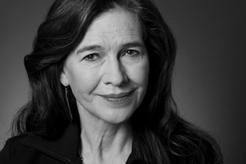
© Robin Holland
CAITLIN HORROCKS: In my required high school American Literature course, my teacher passed out worn photocopies of the first chapter of Louise Erdrich’s Love Medicine. At the time, I was the kind of insufferable student who thought that my job was to learn from The Classics, and that my teacher’s job was to teach them to me. We already had a class anthology we called “the brick,” nearly as thick as it was wide. What was the purpose of this suspiciously modern, suspiciously crumpled Xerox of something called “The World’s Greatest Fisherman”?
As I read I was entranced, and chastened. In those first lines, June Kashpaw, “a long-legged Chippewa woman, aged hard in every way except how she moved,” is tempted into a bar. It’s the day before Easter, and entering the dark room, June walks towards a sky blue egg in a man’s hand, “a beacon in the murky air.” June has a bus to catch, but at the prospect of a moneyed man, she stays. She makes that decision on page three, but I was already scared for her, urging her to get on that bus and go. Four pages later, the man’s expensive down vest slides against June’s body like “an enormous tongue.” Vest like a tongue, blue egg like a beacon: I first read those lines 18 years ago, and I will probably remember them for the rest of my life. I will also remember the way that section of the book ends, with June setting out on foot for a destination she will not reach. The reader knows this is a walk June should not undertake, even as we understand why June wants to. June walks over the snow “like water and came home.” Even at 14, I knew what that meant, and I loved Erdrich for telling me without telling me, presenting me with a gritty world described in poetry, and allowing me the privilege of filling in the blanks by myself.
In the next chapter, the voice shifts to a high-flying lyricism: “So when I went there, I knew the dark fish must rise. Plumes of radiance had soldered on me.” Check this out, I said to my father, and read those first lines aloud to him; he helpfully corrected my pronunciation of “solder.” This was another form of trust Erdrich placed in the reader, I thought: this silent L, this word I didn’t entirely understand, but wanted to.
There was on every page something new to try to absorb: her sense of language, sense of character, sense of how the passage of time alters our dreams and sense of self. I also loved the way the novel was a stealth short story collection, arcs within arcs. I tore through the rest of Erdrich’s books, everything she’d written up to that point; there are few authors I’ve admired more or read so voraciously. She kept feeding me, challenging me, even inspiring jealousy, although I was not at the time allowing myself to believe that I might really try to become a writer. But on some level, I think I knew that I wanted to try and do what she did in that book, in those very first photocopied pages. I’m still trying.
JIM LYNCH: Louise Erdrich’s characters have popped off the page for me ever since “Love Medicine” opened with beautiful June Kapshaw having sad, drunken sex with a stranger in a truck before she walked off into the night and froze to death. Something about the rhythm, wisdom and playfulness of that novel made me want to write fiction. And now, thirty years later, she inspires me again with “The Round House” and another bucket full of palpable characters ranging wildly in style, age and sobriety. In this book, justice is elusive, the priest is profane, the kids are vigilantes. It’s a provocative story that dares to be political. Yet more than anything, like all her fiction, it feels real and raw, big-hearted and symphonic and worthy of re-reading.
VANESSA VESELKA: I don’t recall how I came across Love Medicine. As with many books that have marked me, it was bigger than the circumstances surrounding its appearance. I was in my mid-twenties at the time and couldn’t find my way into my own century. I felt like writing had grown small. It pointed at malaise and illuminated the petty but excised its role in real tragedy. Academic writing seemed to have cleaved the Great Novel in half—plot to one side, character portraits to another—in a sort of Solomon’s baby approach to literature and I, unable to choose, stayed with pre-Atomic age work. Love Medicine, and the story cycle that unfolded from it, was a portal for me into my own time. In Erdrich’s work, detail and character serves something bigger. That first trilogy is airtight. Every action, no matter how small, has karma of its own. The stark fragility of her world also stunned me. While I was not Chippewa, I knew and understood the people she wrote about. They made much more sense to me than, say, the depletion of retired businessman failing at monogamy and reflecting on how he used to feel things (no offense to retired businessmen). Erdrich’s characters, though, had messed-up belief systems and transcendental concerns, which played out with grand intention no matter how small the venue. In a rundown bar, in a truck, on a snowy field, they made decisions of terrible import, of grace and failure. Whereas the characters in many contemporary ‘literary’ novels were fascinated by their own jadedness, the people in her stories were alive with their disappointment. That, too, touched a hidden nerve: the need for unsparing vision to include beauty. Without my knowledge or permission, Louise Erdrich instilled in me a compass point that would guide my own work. Be as dark as you like and show the truth the best you can, but love your characters, love your world.
JEFFREY EUGENIDES
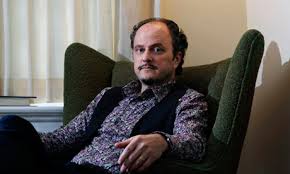
© Mel Evans
KIRSTEN MENGER-ANDERSEN: I loved Middlesex, which I read on a vacation in Canada, the duration of which I was sick and confined to bed; I still think fondly of that time. The Marriage Plot became my favorite bus companion, and the novel rode with me all over San Francisco. Most recently, I read The Virgin Suicides, which I picked up because I was making a small study of novels that used a collective point of view. Eugenides uses the ‘we’ beautifully, but I found myself distracted from my own study by the many other things he does so well. One particular line from The Virgin Suicides escaped the page and joined my muses: “Inside, the leather bucket seats retained idiosyncratic perspiration marks—you could see where Mr. Fontaine had rested his head in traffic jams, the chemicals in his hair spray turning the brown leather a light purple.” I love how the environment, the character, and the character’s effect on the environment are drawn with one perfect line of text, and the description often floats through my thoughts as I write. The fact that Eugenides is crafting his work, perhaps even now, as I write this brief statement of admiration, is alone inspiring and glimmering evidence that we live in a remarkable time.
KAREN THOMPSON WALKER: Eugenides has a great talent for making the details of ordinary life radiate with meaning and beauty. It’s partly his lyrical language, and it’s partly his amazing eye for detail. And I love the way that almost every sentence in the book is suffused with emotion. After reading The Virgin Suicides, I began to realize that the small experiences of my own suburban childhood might be worth writing about, if only I could find the right angle. Soon after that, I began to write my first novel, The Age of Miracles.
BRIAN EVENSON
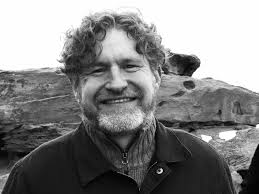
© Valerie Evenson
MATT BELL: Brian Evenson is a master of the fugue, of the discomfiting conjecture, of the ethical blankness that invites—or perhaps demands—that the reader insert herself into the story, ready to act. In his novel Dark Property, one of Evenson’s characters says, “Truth cannot be imparted. It must be inflicted."—and it is likely that no matter what book of Evenson’s we’re talking about, a reader might indeed feel like something had been inflicted upon him, after spending time inside Evenson’s books, which are so frequently violent and disorienting, destabilizing norms of behavior just as they destabilize identity, place, memory. In an essay published in Fence, Evenson wrote that "the task of the writer is to use whatever tools he or she can to crack the reader open without the reader realizing, and then to initiate a process of transformation and destruction before the reader realizes it and can take steps to protect himself or herself.” But what then, is Evenson’s inflicted truth, and how does it transform and destroy us? In book after book, Evenson perhaps does not get us significantly closer to the “truth” of his big questions—and the bigger the truth, the more necessary the air-quotes—but rather, he gets better at phrasing these most difficult questions through narrative. In his most recent books, especially The Open Curtain and Last Days, Fugue State and Windeye—it seems Evenson is asking, in dozens of innovative and powerful ways, What does it mean to human? What does it mean to be moral? What does it mean to be me, this particular version of me, and is this person who I believe myself to besomething that can be known, pinned down, made to last? Moralities and memories, spaces and identities, these things shift constantly in Evenson’s work, and often away from surety or stability—but in the end, no matter what other violences are done or losses are suffered, often the questions remain, as vital and as moving as ever, or perhaps, paradoxically, they are even strengthened by the ways in which Evenson demonstrates—inflicts—what might be the most terrifying truth of all: That even as we approach the answers we have spent a lifetime seeking, we will never be able to know if we are right, if we have at last arrived at the end of our questions. Instead, we know only that we have paid the cost of our asking, and also reaped the reward—and that both the cost we have paid and the reward we have gained is to be changed, to be transformed, to be, as Evenson promised we would, destroyed.
BLAKE BUTLER: At this point I’m not even sure how I came across him, but reading Brian Evenson was a pretty huge discovery for me. I spent a couple years concerning myself mainly with the big postmodern brains like Barthelme and Pynchon as well as those I like to think of as the “in their 30s in the late 90s” school like Antrim, Moody, Baker, Saunders. I think this first book of Evenson’s that I bumped into was The Din of Celestial Birds, which I ordered on a whim based on the weird macabre blurbs and images I found in online descriptions of his work. It took me totally off guard: his writing was more affective and psychological than a lot of what I’d been reading, with as much attention to language as to plot and tone, creating such a total effect that once I read any of his stories it was pretty hard to forget the way they felt, which is saying a lot for me because I have a horrible memory. I don’t think I’d realized before then how a book could be both languagey and immersive at the same time, creating a sense of mystery that did more than just tell a story. It really got my brain spinning. I read everything of his that I could get my hands on after that (and still do), and also through that wormhole was able to find more kinds of affective language-centric writing like the Lish school of writers and other dark mechanical shit like Robbe-Grillet and FC2, which really helped me move out of the way I’d been trying to imitate a lot of those late 90s people that I tried so hard to work in the tradition of and just couldn’t: it didn’t come naturally, and didn’t feel right in my mouth. Finally I started to see how you could wander in the dark and let something innate or waiting in you take more of the control from the ego, project a kind of mesmerized-like way of speaking that opened more and more doors as it progressed.
PETER ROCK: I’ve never met Brian Evenson. He and I have risen from/been spit out of a similar vortex, though, if in different directions, so I’m quite interested in him and his work. I grew up in Salt Lake City, Utah; while I’m not Mormon and never was, the religion was everywhere (we prayed a lot in Cub Scouts, for instance), and the spirits there are thick in the air. It’s not an environment that doesn’t shape you in significant ways. Now Brian Evenson, he was Mormon, and even taught at Brigham Young University, before being cast out (losing his teaching job and being excommunicated from the church) because of the content of his fiction. The cold, twisted fury of the stories in Altmann’s Tongue were a warning sign. Father of Lies is where he really got in trouble, writing about an abusive Mormon bishop. The tension of his work, and the awareness of the spiritual and physical being so bound up together, is truly specific. His willingness to push boundaries, to exaggerate without trying for humor or self-conscious irony, to really create a consistency in a very dark and unexpected place, is so fine. Stories like “Muller” and “House Rules” in the excellent collection The Wavering Knife are so terrifying in their attention. Evenson works as a translator, as well as teaching; he writes genre “horror” fiction; everything he does is managed with the same rigor and focus, and in my opinion it’s because he’s haunted by the strange spirituality of the American Rockies. Really, truly haunted. His most recent novel, Immobility, combines so many strands of what he does. It’s a postapocalyptic tale told in the Salt Lake valley and the surrounding foothills, and the prose and affect is akin in many ways to Beckett. So twisted! The characterization here, even when dealing with people who aren’t entirely people, is transporting, truly human.
PERCIVAL EVERETT
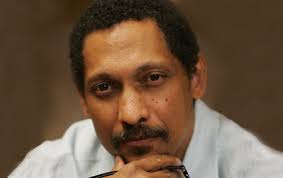
© Philip Channing
ADAM WILSON: As far as I’m concerned, the Jewish Novel as ghettoized sub-genre ended with the 1953 publication of Saul Bellow’s The Adventures of Augie March. Its famous opening line is a declaration of assimilation: “I am an American, Chicago born…” Augie is about the triumph of individualism in democratic America, and with it, Bellow opened the door for a literature encompassing the full panoply of American Jewish experience. A Jew could be any number of things—at one point, Augie gets deeply involved in the traditionally gentile art of falconry—but most importantly, he could be an American, no qualifier necessary.
Augie March may have made a statement about Jewish assimilation—a statement that would prove prescient in the sixty years since its publication—but certain ears continue to be deaf to it. I know this because, as a practicing writer and an occasionally practicing Jew, who wrote a book set in secular Jewish suburbia in which marijuana is the bitter herb of choice, I’ve logged countless hours (or at least they’ve felt countless) on panels and in Q+A’s defending my right to present this particular version of the American Jewish experience. “Why don’t the Jews in your book seem like any Jews I know?” I once was asked. In a country where the cultural representation of Jewish experience is so broad and varied that we get our news from Jon Stewart, our laughs from Larry David, and our erections from Natalie Portman and Mila Kunis, whose all-Semite sex scene in Daron Aronofsky’s Black Swan hits a high water mark for girl-on-girl action in American cinema, this question strikes me as just a wee bit out of date. Yet someone asks, and I must answer, and what I say is that Bellow already answered that question, and Philip Roth already answered that question, and Norman Mailer already answered, and so did Leonard Michaels, and Grace Paley, and Stanley Elkin, and Gary Shteyngart, and Sam Lipsyte, and the answer is no. And what I want to say after that is shit, man, why don’t you ask an African-American writer that very same question, but re: the representation of the black experience in American culture, and particularly you should ask Percival Everett, because he would tell you to get lost far more articulately and entertainingly and intelligently than I could ever do myself.
Everett’s novel Erasure, about a Percival Everett–like, Harvard-educated, arrhythmic, non-basketball playing, author of highbrow, esoteric, critically acclaimed novels that no one ever reads, who is market-driven to perform a pseudonymous minstrel act by penning a “ghetto” memoir called my My Pafology, is in a sense, a direct response to this question. It bravely takes on Oprah Winfrey, the novel Push by Sapphire (later turned into the film Precious), and the way White America uses the language of political correctness to couch its hunger for stereotype perpetuating narratives of African-American violence, poverty, and illiteracy. My Pafology becomes a best seller, but not before its publishers give the book a more appropriate title: Fuck.
–
Allison Amend is the author of the novel A Nearly Perfect Copy and the short story collections Stations West and Things That Pass for Love
Joanna Hershon is the author of the novels A Dual Inheritance, Swimming, The Outside of August, and The German Bride
Katherine Hill is the author of the novel The Violet Hour
Arthur Bradford is the author of the short story collections Turtle Face and Beyond, and Dogwalker
David James Poissant is the author of the story collection The Heaven of Animals
Kevin Sampsell is the author of the memoir A Common Pornography, and the short story collections Creamy Bullets and Beautiful Blemish
Zachary Lazar is the author of the novels I Pity the Poor Immigrant, Sway, and Aaron, Approximately, as well as the memoir Evening’s Empire: The Story of My Father’s Murder
Michael Lowenthal is the author of the novels The Paternity Test, Charity Girl, Avoidance, and The Same Embrace
Manuel Gonzales is the author of The Miniature Wife and Other Stories
Christian TeBordo is the author of the novels We Go Liquid, The Conviction & Subsequent Life of Savior Neck, and Better Way of Being Dead, as well the short story collection The Awful Possibilities
Scott Cheshire is the author of the novel High as the Horses’ Bridles
Phil Klay is the author of the short story collection Redeployment
Caitlin Horrocks is the author of the short story collection This Is Not Your City
Jim Lynch is the author of the novels Truth Like the Sun, Border Songs, and The Highest Tide
Vanessa Veselka is the author of the novel Zazen
Kirsten Menger-Anderson is the author of the short story collection Doctor Olaf van Schuler’s Brain
Karen Thompson Walker is the author of the novel The Age of Miracles
Matt Bell is the author of the novel In the House Upon the Dirt Between the Lake and the Woods
Blake Butler is the author of five books of fiction, including Three Hundred Million, There Is No Year and Scorch Atlas, and a work of hybrid nonfiction, Nothing: A Portrait of Insomnia
Peter Rock is the author of the novels The Shelter Cycle, My Abandonment, The Unsettling, The Bewildered, The Ambidextrist, Carnival Wolves, and This is the Place
Adam Wilson is the author of the short story collection, What’s Important is Feeling, and the novel Flatscreen
Lettering by Caleb Misclevitz




